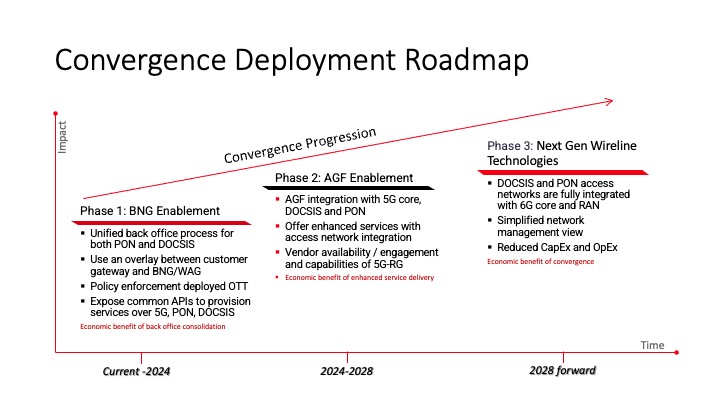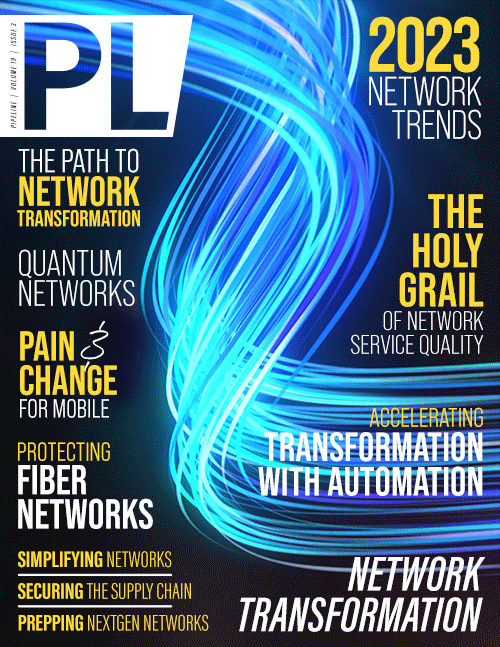Innovation, Automation and the
Path to Network Transformation
Bridges noted that “with a converged solution, you'll be able to actually roll out services across all types of networks at the same time without having to worry whether it’s XPON or 10G, DOCSIS or 5G,” said Bridges. “We're running all these on the same infrastructure, using the same servers, switch fabric, and container platform, and this synergy allows things to work really well and will let operators focus on the important pieces,” like rolling out competitive new service offerings.
Cable operators have invested in CBRS spectrum in the 3.5 gigahertz band, which is expected to be a key element in a more comprehensive mobile strategy. Bridges described it as initially supporting general coverage but eventually being used for private LTE and 5G deployments for enterprise applications.

Figure 3: CableLabs - Convergence Deployment Roadmap
click to enlatge
Evolving networks, managing legacy infrastructure
The converged network vision is a compelling one with potential for lots of stops and starts along the way. Thuy Nguyen, Cable Segment Manager for Intel, described the process of upgrading cable operator network infrastructure while also managing legacy systems this way: “It’s like fixing the car while it’s still running.”
Cable’s existing network infrastructure is not likely to change overnight and will likely be around for some time to come, but the next cycle of network evolution will focus on automating the network to better manage complexity, simplify operations, and enable service velocity.
Comcast is already leading the way on the network automation part of this journey. Comcast Fellow Bob Gaydos, who leads the Enterprise Architecture team for Comcast Connect and is responsible for technical strategy for core and access network, shared that by using its CI/CD process, Comcast was able to deploy and upgrade 16,000 hosts with a new version of Linux with a push button while operators were asleep, and in another instance, upgraded 50,000 digital optical nodes overnight. “In the past, cable operators were never able to achieve the level of proficiency in upgrading its legacy, purpose-built chassis with that kind of speed, accuracy and ability to test out the telemetry,” said Gaydos, speaking at an industry session on “vCMTS Scale & Sustainability.”
Automation is allowing Comcast to find and fix problems faster than ever before, and with the expected migration to a “mid-split” network configuration for more bandwidth in the upstream path, and roll-out of multi-gigabit symmetrical services using Full Duplex DOCSIS (FDX) on the road to 10G, it’s going to need all the power that automation tools can deliver to keep up with the required volume of changes and fixes.
The end game is the same
To get to that kind of proficiency, however, service providers are going to have to shrink the variability in their network designs, both within and across operators, and move toward infrastructure that allows easy support by software vendors in order to write applications on common platforms.
Ultimately, however, it’s the same end point for cable service providers as for their telco rivals—more bandwidth, more convergence, more virtualization, more automation on cloud-native, containerized platforms that provide faster and easier ways to turn up new services and to centrally monitor, manage and update networks without requiring truck rolls—using less energy, delivering better TCO, and ensuring happier customers.



















